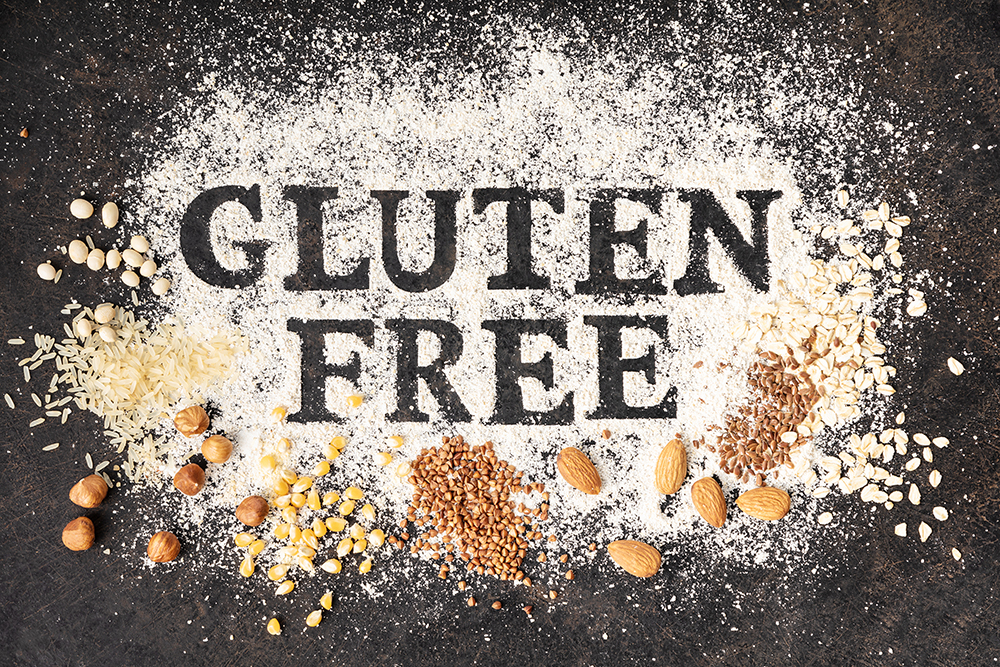
A healthy body is designed to be able to digest all the variety of food that nature provides for us. There were no allergies or intolerances among nature-loving peoples.
Studies with children who grew up on a farm showed that their immune systems were worlds stronger than those of city children. Nowadays, unfortunately, more and more children are being born with this problem.
As the level of suffering among families with sick children is so high and we know that many things are preventable and, in our opinion, curable, our focus is on gut health, the source of many diseases.
Cereals containing gluten have always been an integral part of the diet of many traditional, healthy people. According to historical records, cereals have been eaten for as long as humans have existed. It started with porridges, a little later pancakes and at some point
baked real loaves of bread. Nowadays, however, the many modern alternatives and industrial baked goods unfortunately have nothing to do with what bread used to be.
If you have intolerances, your gut is showing you that it is damaged and needs healing. Many doctors then advise an elimination diet, which is correct in the first step. However, they do not show you what you can do to sustainably heal your gut and get rid of the intolerance. A gluten-free diet is only one way of living with the disease, but it has nothing to do with finding the cause and, above all, nothing to do with curing it. Diagnosed coeliac disease is an even more serious problem for those affected, as they are not allowed to come into contact with even traces of gluten. Most doctors do not give their patients any hope. You have to learn to live with it and simply never eat gluten again. However, there are also people who have been able to cure genuine coeliac disease, an often genetic and supposedly incurable defect.
Natasha Campbell-McBride has proven this with her so-called“GAPS diet“. After the intestines were healed, many patients were suddenly able to eat home-made sourdough bread made from freshly ground grain again. We don’t know whether this always works for everyone. But we know that the evil is in the intestine and if children are born with this defect, it is no coincidence. With our diet, we have it in our hands to give our unborn children the best possible start in life, to give them a healthy microbiome and a strong immune system. It therefore makes perfect sense to rethink your lifestyle and build up and strengthen your intestinal flora before you conceive a child. This is because a baby receives its microbiome directly from its mother at a natural birth. All the more reason for expectant mothers to prefer a natural birth (as long as medically feasible).
The knowledge of how to sustainably heal the gut with nutrition is not taught in medical school. We must therefore act on our own responsibility and inform ourselves.
Colon cleansing and detoxification would be one possibility for a small “reset”. For many, however, gentle daily detoxification is sufficient, for example by eliminating harmful food and toxins. We have an endogenous detoxification system that we should nurture and support as much as possible. Then the body regulates everything on its own and does an incredible job day after day.
A lot of fear and horror is spread around the topic of gluten. A gluten-free diet is therefore not only practiced by those who have genuine coeliac disease. Health-conscious people are also increasingly turning to substitute products. For example, “gluten-free” on packaging is now a big seller, as it is associated with a healthy lifestyle.
Gluten-free baked goods are not automatically healthy just because they are labeled “gluten-free”. In some cases, they also place a real strain on the intestines and hinder the healing of the intestinal mucosa. Gluten-free flour mixtures usually consist mainly of maize and rice. Interestingly, corn lectin is similar in structure to gluten. Because even if these products are tolerated, they trigger the intestines again and again. What’s more, gluten-free flours have poorer baking properties, which means that they
lacks the gluten protein that makes the dough so elastic. This is why such baking mixes, pasta or other gluten-free ready-made products (such as breads and cookies) often contain additives and various low-quality extracted flours.
Due to the heavy processing and industrial preservation of packaged extract flours, these are in most cases inferior foods that do us more harm than good. In recent years, chickpea flour, lupin flour and lentil pasta have also conquered the food market. To make pulses more digestible, however, they should be soaked before cooking. However, this is not taken into account in the production of flour or pasta, which also explains why they are heavy on the stomach.
Gluten-free baking with nut flour is also becoming increasingly popular. Nuts contain valuable nutrients and good fats, but they are very unstable. There is a reason why they have been given a protective shell by nature. They tend to oxidize quickly. Packaged almond flour and ground nuts are most likely already rancid on the supermarket shelf or have been denatured (to prevent rancidity).
Address:
Gasteigweg 25,
5400 Hallein
Austria
Opening hours:
Monday to Thursday: 09 – 16:00
Friday: 09 – 12:00
Contact:
Phone: +43 6245 83282
E-mail: info@agrisan.at
Address:
Gasteigweg 25,
5400 Hallein
Austria
Opening hours:
Monday to Thursday: 09 – 16:00
Friday: 09 – 12:00
Contact:
Phone: +43 6245 83282
E-mail: info@agrisan.at

